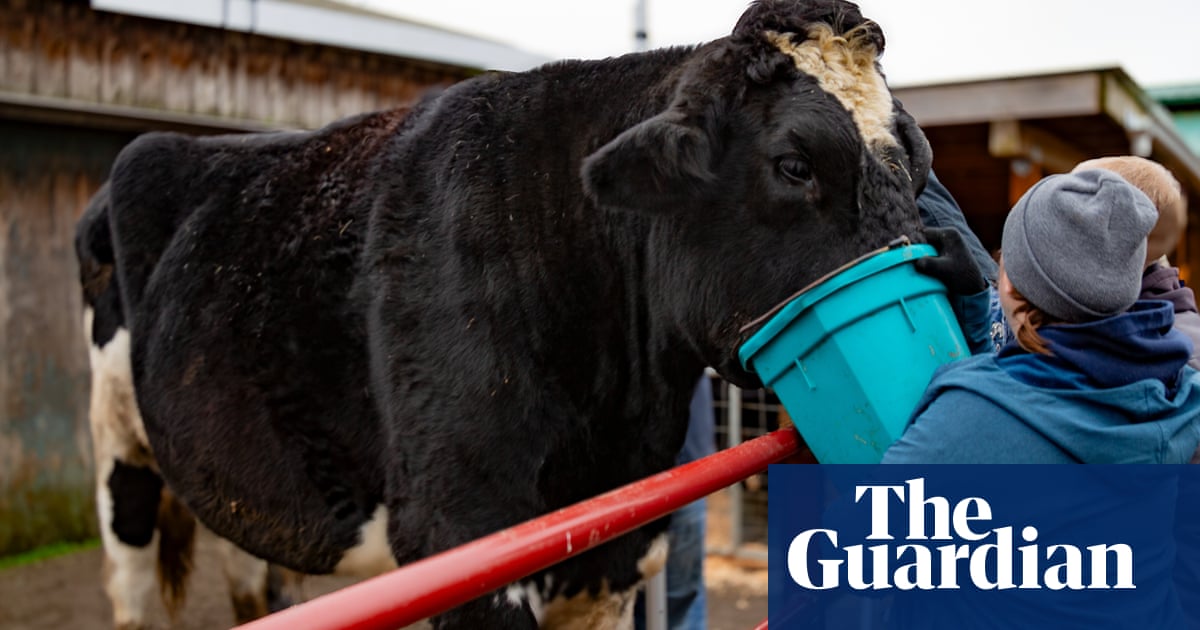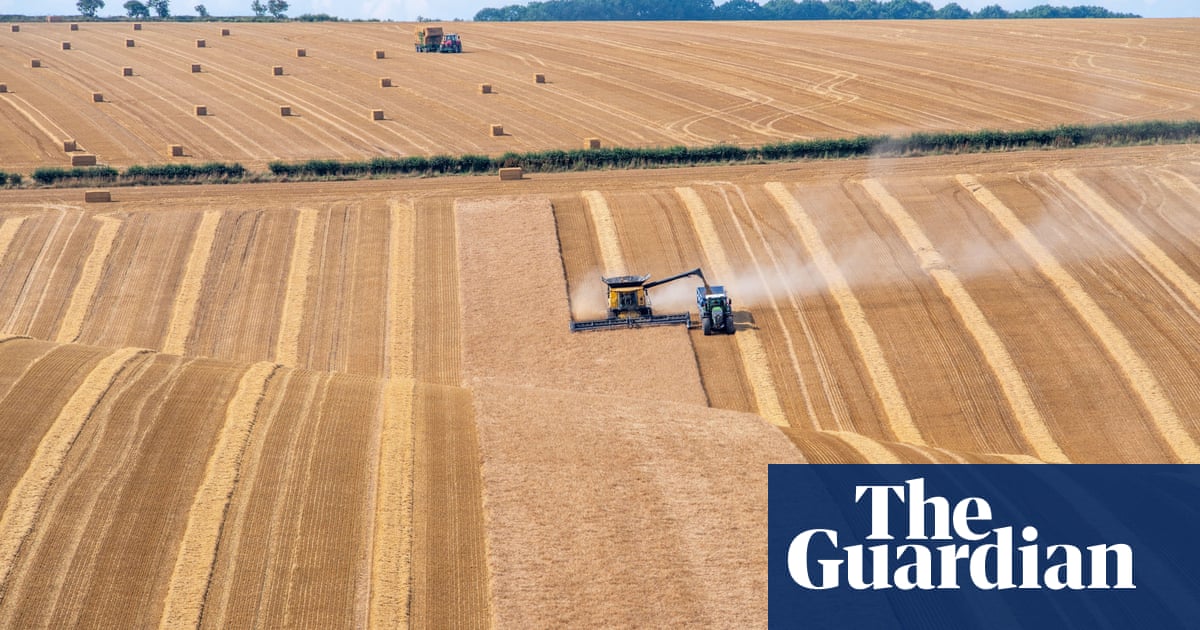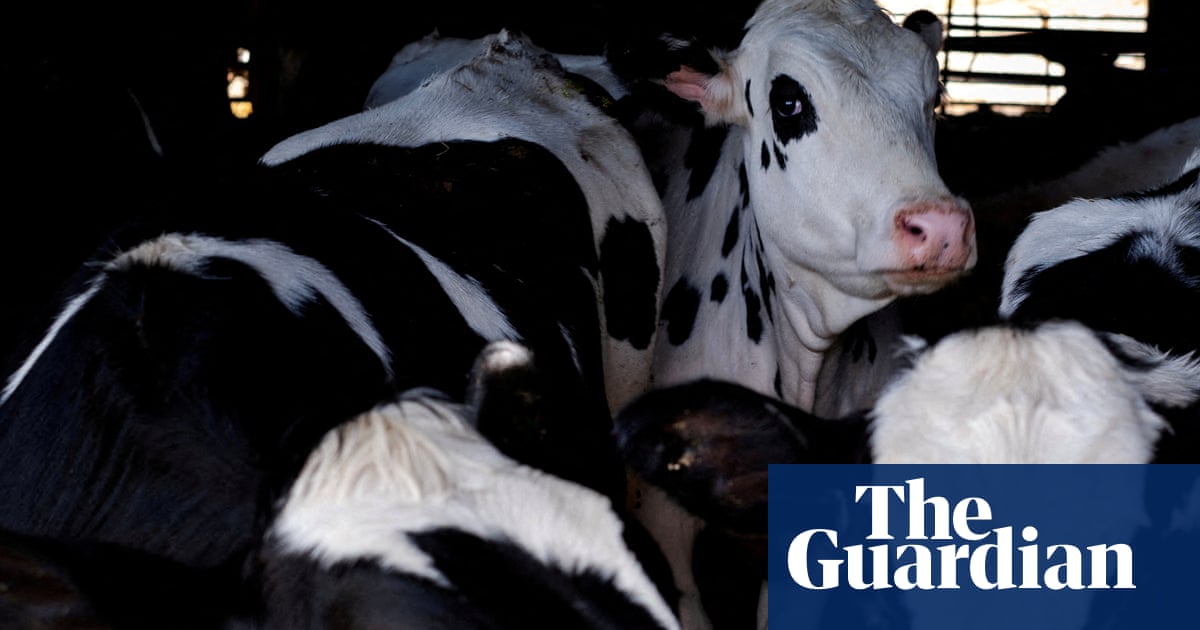The American steer Romeo was just 10 days old when the owners of an animal sanctuary in Oregon saved him from being slaughtered.
And during the six years since married couple Misty and Robert Moore afforded him mercy, Romeo has grown into the tallest living animal of his kind. The once tiny Romeo now ingests 100lbs of hay, 15lbs of grain and an entire bathtub full of water daily to remain adequately fed and hydrated at a height of 6ft 4.5in (1.94 meters), the steerâs owners said in an interview published on the Guinness World Records site.
The organization verified Romeo as the worldâs tallest living steer, seizing the title from his 6ft 1in (1.87 meter) tall predecessor Tommy of Cheshire, Massachusetts.
The Moores told the organization known for curating a database of more than 40,000 world records â including the one held by Romeo â that their unprecedentedly tall steer calls attention to the harsh realities of business at dairy farms.
Unable to produce milk because of their sex, âmale calves like Romeo are often deemed as mere byproductsâ and face a life marked by confinement in a veal crate as well as eventual processed meat slaughter, âtheir destinies predetermined by profit marginsâ, Misty of Welcome Home Animal Sanctuary in Creswell, Oregon, told Guinness.
âBut fate had a different plan for Romeo.â
Misty recounted how she was at her sanctuary â which provides life-long care to vulnerable animals â when she received a call from someone who was interested in having Romeo rescued.
She said her team âcould tell that he was longing for a fulfilled lifeâ, so the sanctuary welcomed the steer âwith open arms and boundless loveâ.
âIt became our mission to grant him that life â a life filled with safety, compassion and unwavering affection,â Moore said.
The steerâs affinity for cuddles from humans inspired the Mooresâ sanctuary to name him after one of the protagonists of the famous William Shakespeare love story Romeo and Juliet.
He quickly showed how âhe delights in both expressing affection and receiving itâ, Misty added. And he has also demonstrated smarts that some may not instinctually associate with bovines of his size, figuring out how to drink rainwater from a spout in his shelter at the sanctuary without getting wet.
Feeding him the eight-plus stone (112lbs) in hay and grain that Romeo needs daily â along with the dozens of gallons of water to wash it all down â strains the Mooresâ finances to the point that they resort to fundraisers for some relief in that area.
It can also be challenging to find him the right veterinarian care because not every animal hospital has the right equipment for creatures that big. And eventually, Romeo may have to grapple with musculoskeletal and digestive problems, along with other health issues.
But for now, the fact that Romeo has lived beyond the 24 months that those of his ilk usually get gave him time to grow as tall as many professional basketball players â and the Moores the opportunity to submit him for Guinness World Record consideration.
Other activities to which Romeo has devoted himself are sunbathing, scratching himself against trees, exploring the sanctuaryâs pasture and accompanying humans as they carry out repairs at his home facility.
âHe knows his name, loves to play and sometimes attempts to jump in our arms with pure excitement,â Moore told Guinness World Records. âRomeo is a gentle giant overflowing with affection and playfulness.â









